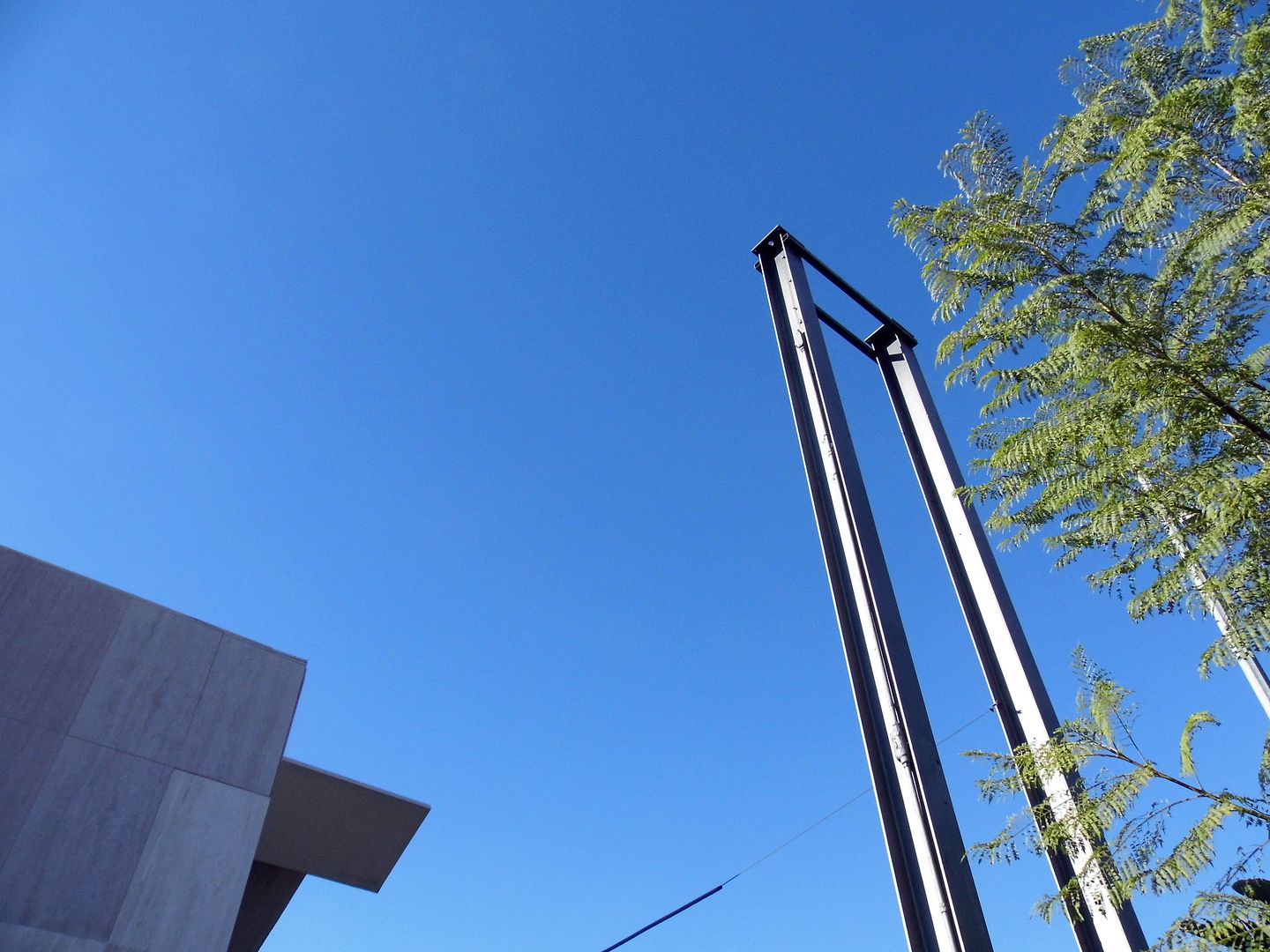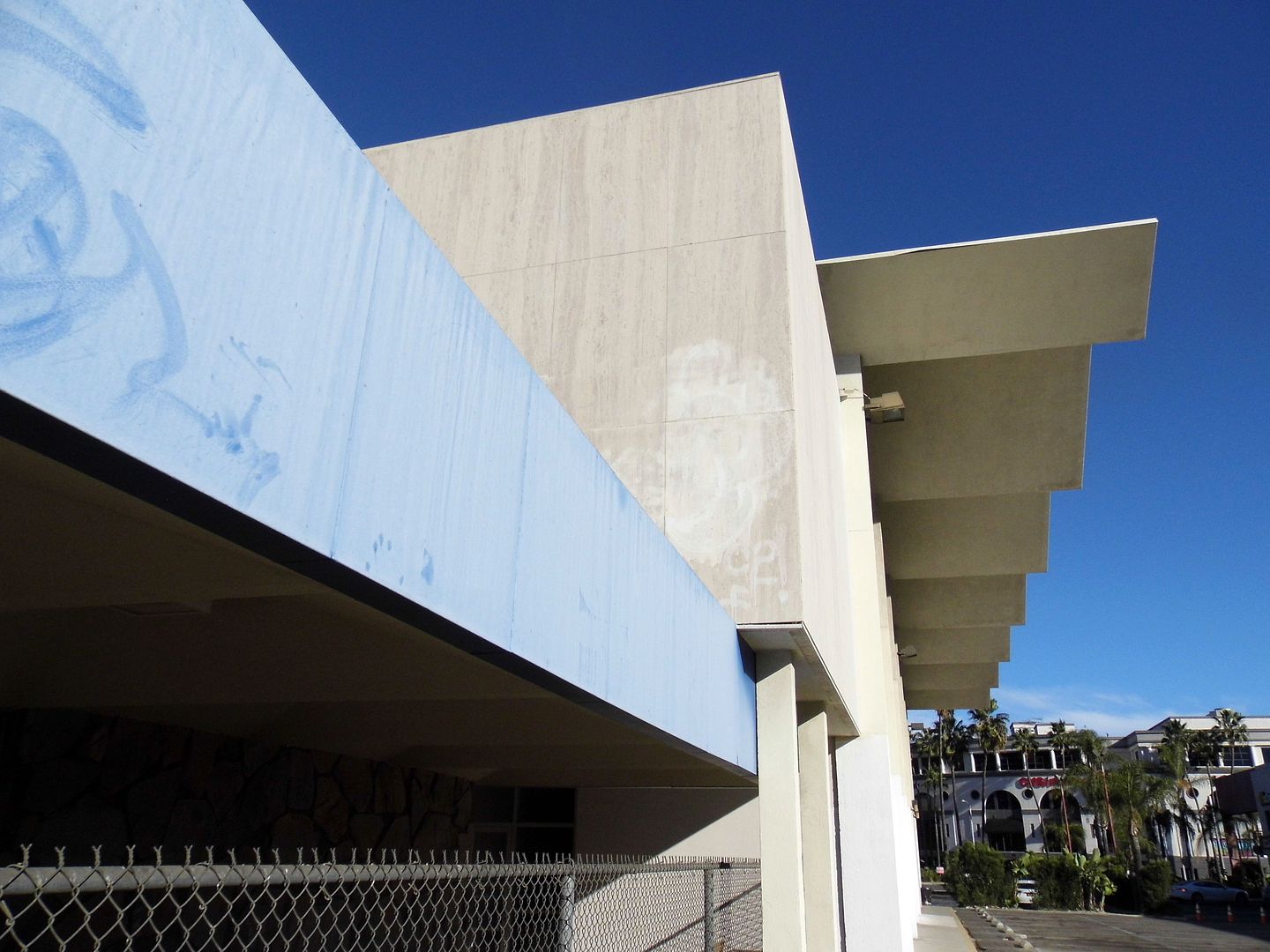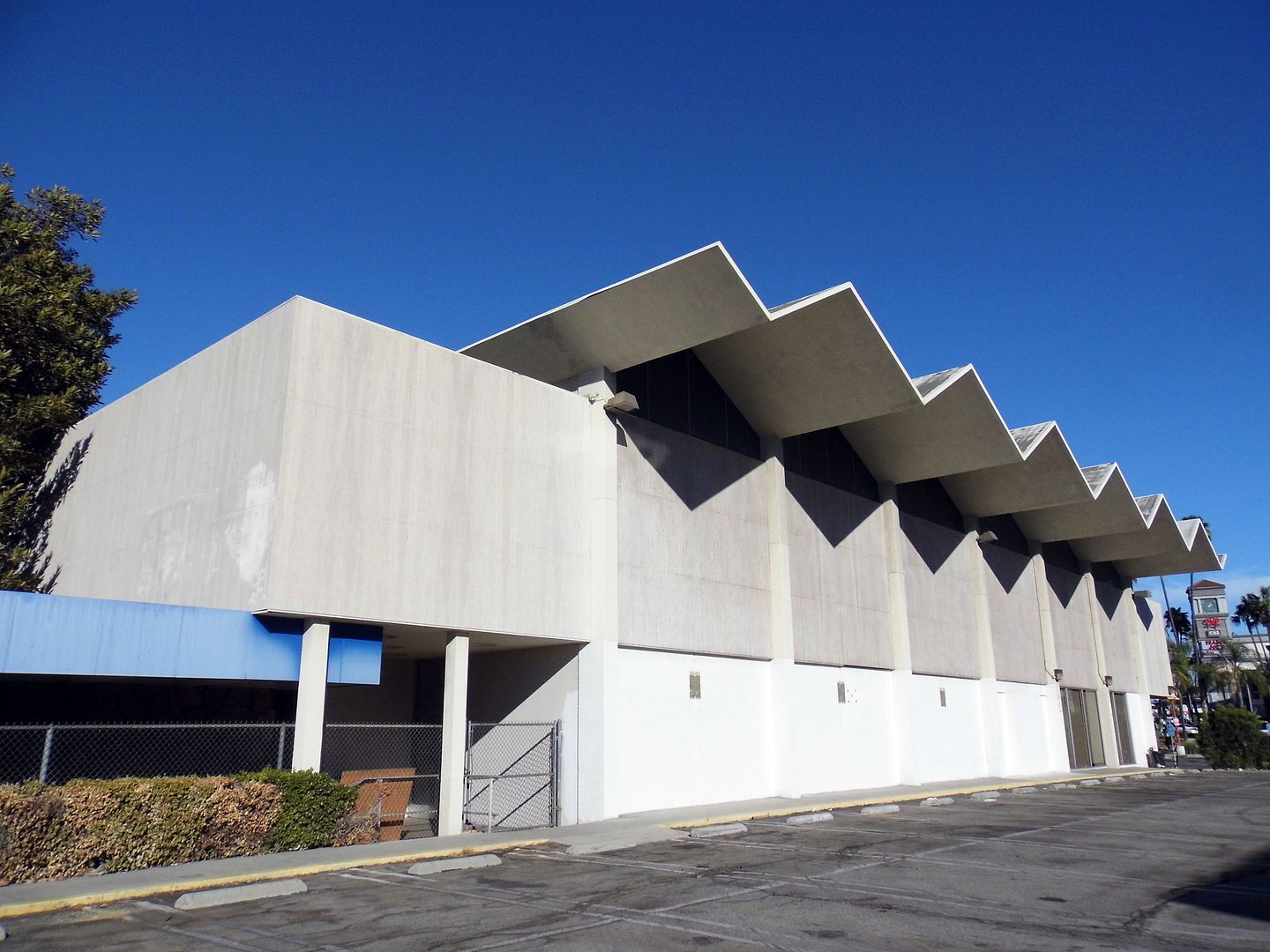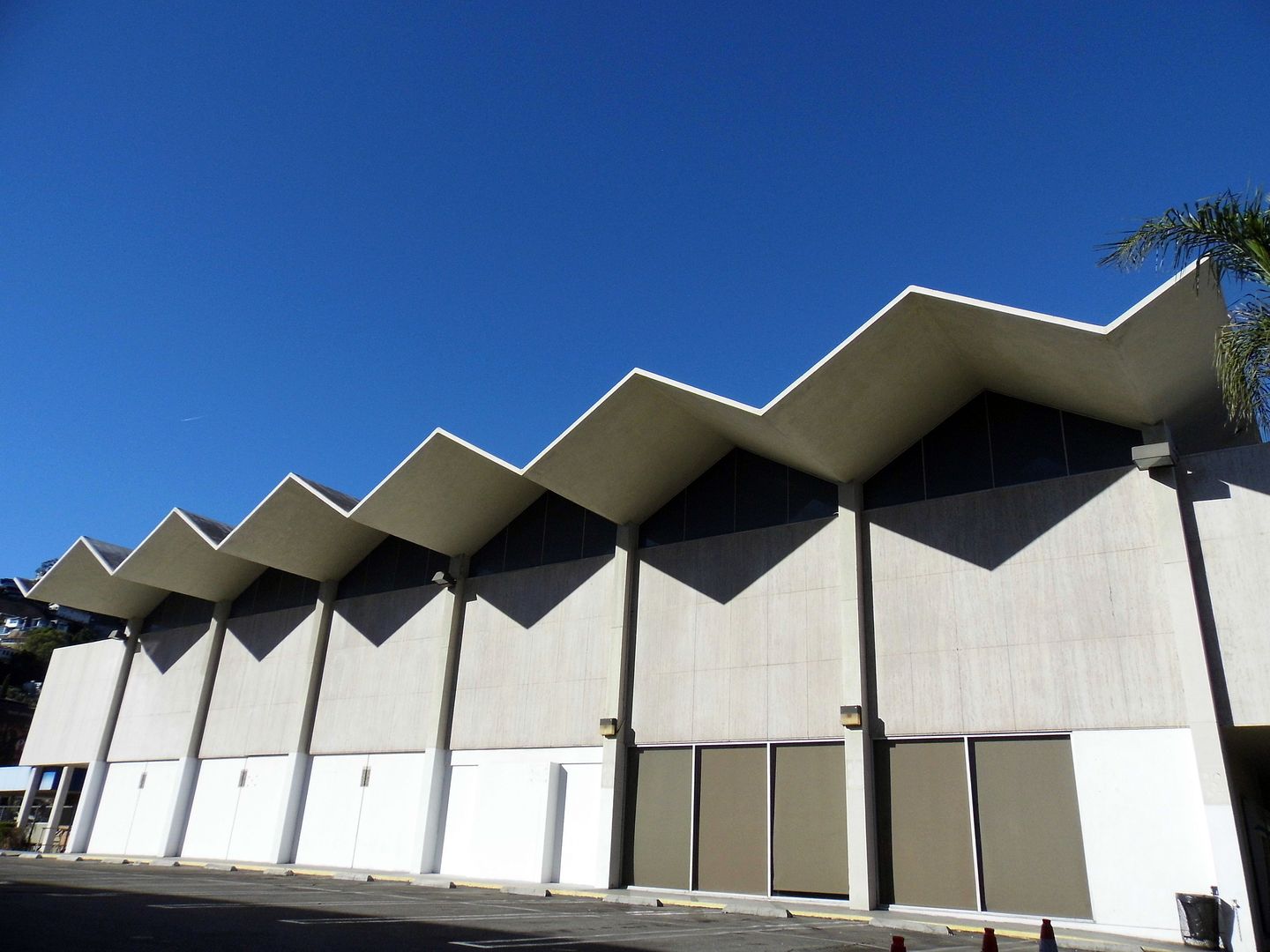[Last updated 2/25/23 11:03 PM PT—The Chase Bank was demolished in April 2021.]
Circa 1927 (Photo: Los Angeles Public Library Images)
At the intersection of Sunset and Crescent Heights, there once stood the 1913 estate formerly known as Hayvenhurst (named after real estate developer William H. Hay), later renamed the Garden of Alla for actress Alla Nazimova, and finally known as the Garden of Allah Hotel, the so-called "playground to the stars."
Photo: Julius Shulman, 1960 (© J. Paul Getty Trust. Getty Research Institute, Los Angeles (2004.R.10))
That is, until banker Bart Lytton bought the place, and demolished the Old Hollywood estate in 1959 to build the flagship branch of his Lytton Savings & Loan in its place.
And now, somebody else is
Is this intersection cursed, or what? Maybe it's divine retribution, or karma, or just a matter of what goes around comes around. But just as we're starting to learn to cherish the bank building with the zig-zag roof, it seems as though we're about to lose it.
This 1960 Kurt Meyer-designed structure with the accordion-style roof (just recently approved as a landmark) is an early example of the modern architecture that typified bank buildings in the post-WWII era.
But that doesn't mean it's safe. We've lost other Googie facades in recent years.
It doesn't feel very modern anymore. Well, not Frank Gehry modern, anyway.
It doesn't really tell the story of the "Sunset Strip," which it's located at the eastern edge of.
And Chase banks are so prevalent on a national level that maybe it's hard to imagine any Chase Bank being historic...
...except for the fact that many of today's Chase Bank locations in Southern California actually are architecturally, culturally, and historically significant sites (most of them former Home Savings and Loan branches) featuring murals and mosaics by Millard Sheets, sculptures, stained glass, and other public art.
I actually wasn't much interested in this Chase Bank—despite it being in my neighborhood—until I found out that there was some art glass by Roger Darricarrere inside.
Up to this point, I'd only seen his dalle-de-verre artwork in ecclesiastical settings.
But since some people treat money like religion and banks like their church, I guess it's fitting.
In this case, the "chunks" of colored glass are embedded in lots of concrete rather than lead...
...creating a three-dimensional wall mural that actually wraps around the rear of the main lobby, now tucked behind some cubicles.
Since it's not a window but more of a screen, it's artificially lit from the inside—but only part of it.
But with daylight streaming through the glass walls that face Sunset Boulevard, you can see the tell-tale marks of the glass having been hammered and cleaved...
...and, of course, the bubbles often found in the craftsman's faceted glass works.
The screen stands eight feet tall and 50 feet wide, which is pretty monumental for Darricarrere's first commercial commission. Up close, the concrete is reminiscent of the textile block designs of Frank Lloyd Wright (and, later, Lloyd Wright).
Above it, the folded plate roof design is reflected in the ceiling, each zig and zag illuminated more loyally than the pieces of glass in the screen.
I'd like to think that
Update:
Well, the bank was approved for demolition—and any hopes of a "stay" were dashed when the sculptures outside the structure (David Greene's "The Family") were removed in early December 2020. Wehoville reports that the statues will be returned to the site at some point.
A peek through the window reveals that the art glass screens have been dismantled from their backlighting panels, but their current location is TBC.


circa 2020
In the meantime, all Chase signage has been removed.





circa 2020
Demolition seems imminent.

circa 2020
Here are the rest of the photos I snapped on Christmas Day...

circa 2020
...on what will probably be my last visit to the site...

circa 2020
...while the structure is still standing.
Update 2/25/23: The Chase Bank/Lytton Savings Bank was demolished and the site is an empty lot, as the new Frank Gehry-led project has fizzled and the site is for sale.

Sadness.... the Gehry monstrosity will have none of the grace and simple beauty of those accordion roof lines.
ReplyDeleteit's too bad that we don't consider adapting or incorporating existing buildings into new designs here in LA
ReplyDeleteIf Gehry is such an architectural genius, you think he could figure some way to incorporate the Garden of Allah and the accordian design into his own design, in some way, as well as find a place in it for the colorful glass.
ReplyDeleteJune 2022 - - everything is demolished.
ReplyDeleteEven the McDonald's!
Delete